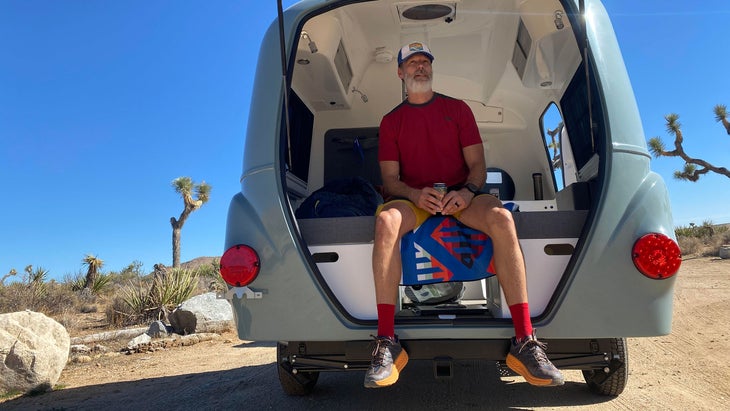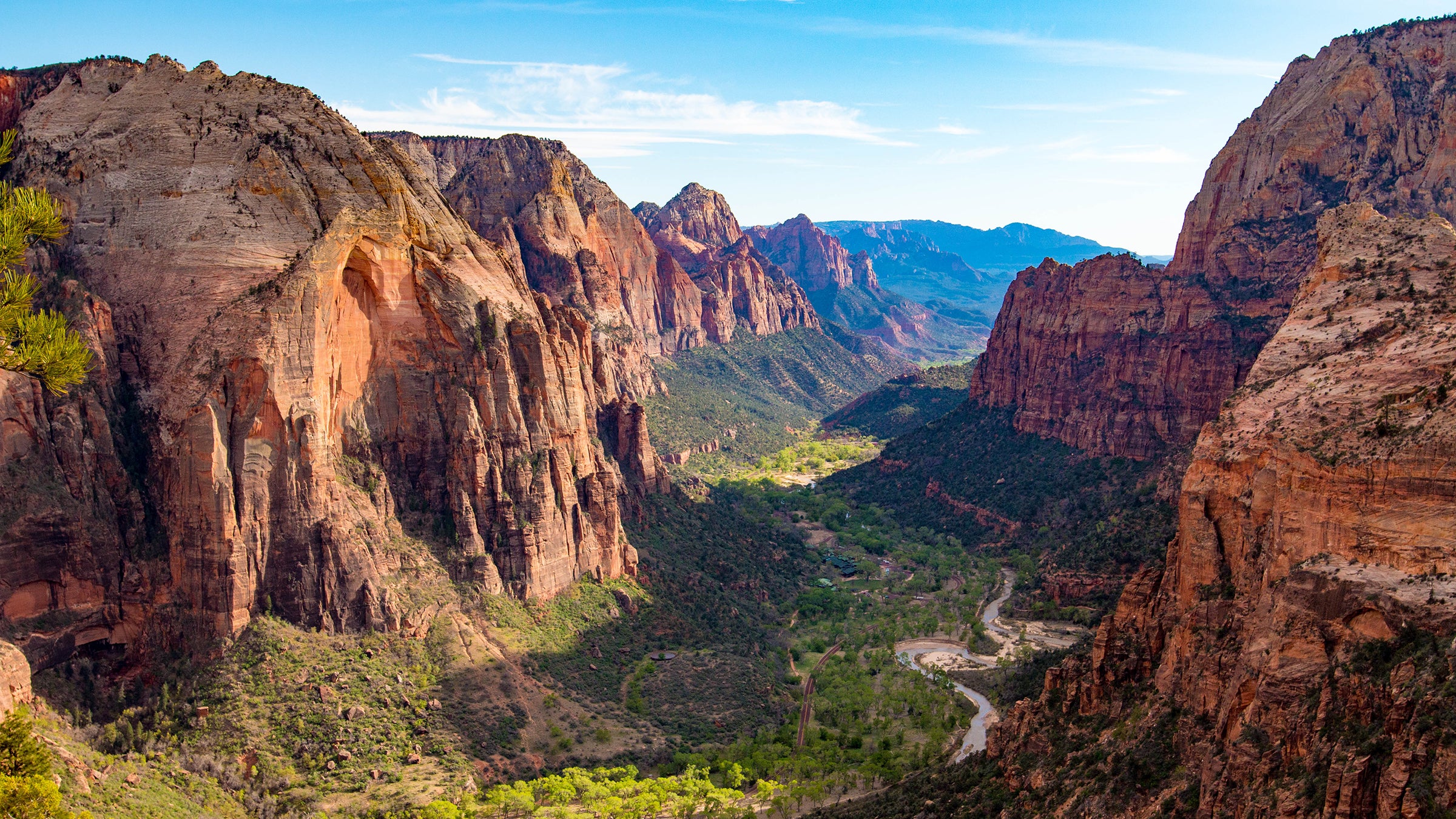The National Park Service recently released their annual , reporting the most guests in the system’s history, with almost 332 million people exploring our parks, preserves, recreation areas, and historic sites in 2024.
Unfortunately, this surge in popularity is coinciding with a staffing crisis within the park service, as the Trump Administration has dictated the organization cut 1,000 employees. In addition to the staff cuts, the Park Service was initially ordered to freeze the hiring of seasonal staff, a workforce that helps bolster park management and care during the busiest months of the year.
“Parks have been understaffed for a long time, with the percentage of full-time employees on the decline while parks have been getting more popular every year,” says Cassidy Jones, the senior visitation program manager for the (NPCA), a nonprofit devoted to advocating for our parks.
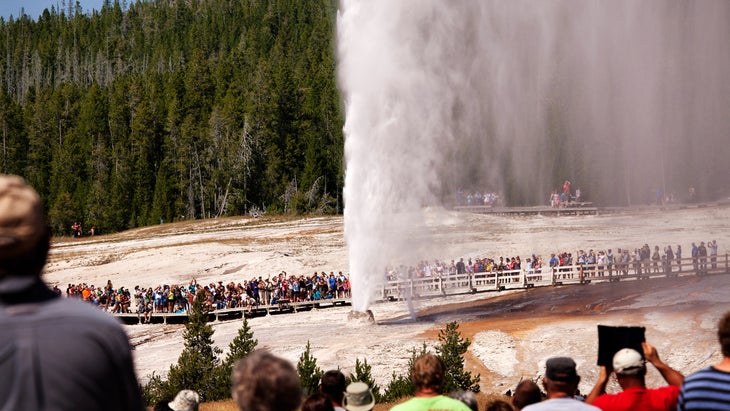
Before Trump’s round of cuts, the overall National Park Service staff had eroded by 20 percent since 2010, while visitation had increased by 16 percent in that same time period. Jones says this latest round of cuts, which eliminates another 9 percent from the overall Park Service staff, will only exacerbate the understaffed and overcrowded conundrum that plagues many of our popular parks. While the hiring freeze of seasonal staff was eventually lifted, the delay caused most parks to be two months behind on hiring the employees that visitors most often encounter—the teams that work the visitor centers, manages the gates, and clean the bathrooms.
As a result, Jones says visitors to national parks this summer might not have the same experience they’re used to, with reduced hours at certain visitor centers, bathrooms that are still closed from winter, longer lines at entrance stations, and some cancelled guided ranger programs. It’s possible that certain recreation facilities, like campgrounds or staffed boat ramps, will also be closed temporarily.
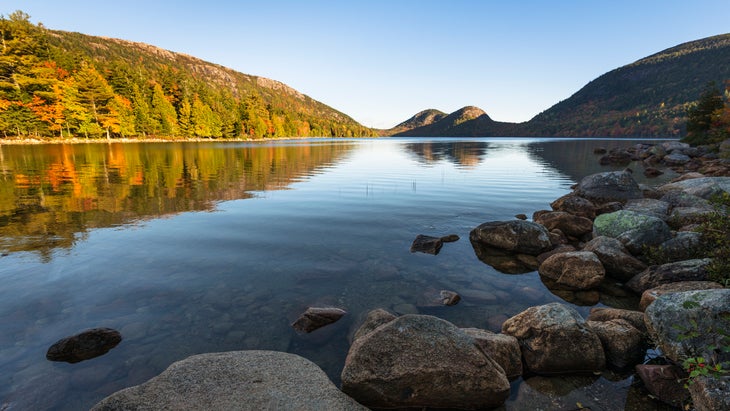
There’s been a lack of transparency from the federal government as to how many employees each park has lost, but the nonprofit Association for National Park Rangers has an unofficial tally that shows the hardest hit parks are also some of the most popular, like Great Smoky Mountains National Park, which lost 10 full-time employees during the initial round of layoffs. And this is likely just the beginning, as the Trump Administration has ordered the National Park Service to reduce its payroll by 30 percent.
“Every park has experienced some staffing cuts, so all of the parks will be stressed this summer,” says Jones.
But that doesn’t mean you should stay home. The 433 units that make up the National Park System are publicly owned, and we have the right to enjoy them. It’s also our responsibility to make sure they’re protected for future generations to enjoy. More than ever, it’s imperative that all visitors have a thoughtful approach to exploring our parks this summer. Here are four things to keep in mind.
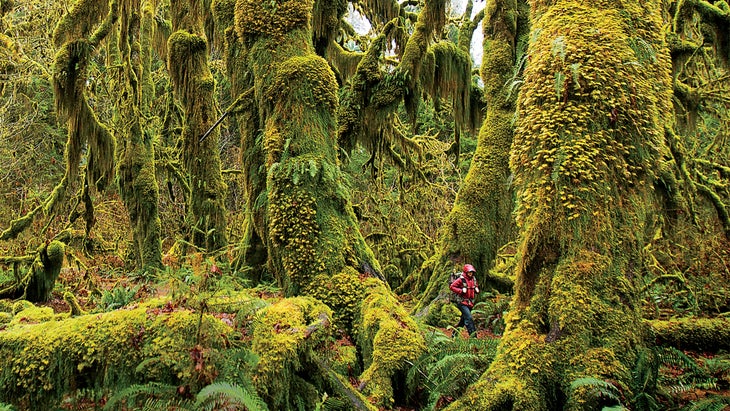
1. Be Kind
We’re all looking for a parking spot. We’re all waiting in the entrance line. That ranger who doesn’t know the answer to your question is doing the best they can. A little kindness can go a long way in a crowded park when people are hot, tired, and just looking for a place to park.
2. Stay Prepared
What are you going to do if the snack shack is closed? What about the bathroom? This summer, more than ever, you need to practice when you visit a national park, which means you need to pack out everything you pack in. Bring the food and water you’ll need, take all your trash with you, and consider packing a few in case the bathroom at the trailhead is closed.
3. Make a Plan
A ranger might not be around to ask for directions or suggestions for easy hikes that your 5 year old would enjoy. So research your trip before you enter the park and acquire the maps you’ll need ahead of time.
4. Speak Up
Like visiting our national parks? Awesome. Follow up that visit by reaching out to your elected officials and let them know how much these places matter to you, and that they need to be fully staffed and funded for everyone to enjoy. The NPCA has a you can use to get your message across.
This is how staffing cuts and surging crowds might impact your favorite parks this summer.
Great Smoky Mountains National Park
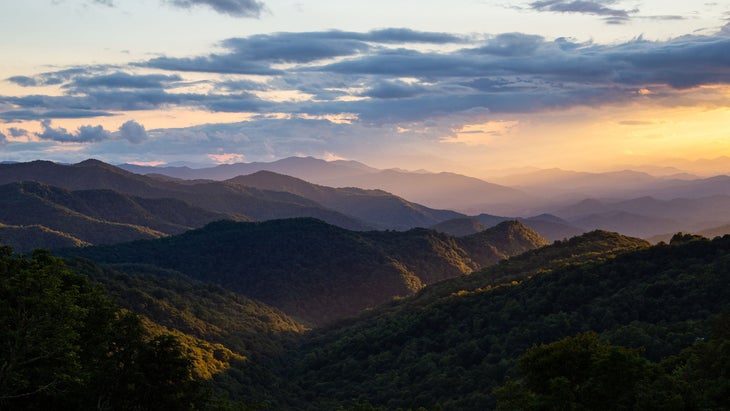
Great Smoky Mountains National Park continues to be the most popular national park in the system, attracting more than 12 million visitors in 2024. It also might be the park hardest hit by the Trump Administration’s cuts. In addition to the impacts from the initial hiring freeze, DOGE initially eliminated 12 employees from the park staff. It’s unclear how many of those have been hired back, but the staffing conundrum has already caused problems with managing park facilities, as GSMNP has announced temporary closures to a variety of facilities, including several campgrounds.
Abrams Creek, Big Creek, Balsam Mountain, Cataloochee, Cosby, and Look Rock campgrounds typically open in the middle of April, but that date has been pushed back indefinitely because of staffing. The park typically offers , all of which are full on a regular basis. Six of those campgrounds are now closed until further notice. If you booked a site at any of those campgrounds, you will receive a refund.
The park is also postponing the popular Vehicle Free Days in Cades Cove, where the 11-mile loop road is closed to vehicles so cyclists and walkers could roam freely on certain days from May to September. That program will be delayed until June. Seven picnic areas are also closed due to lack of maintenance staff.
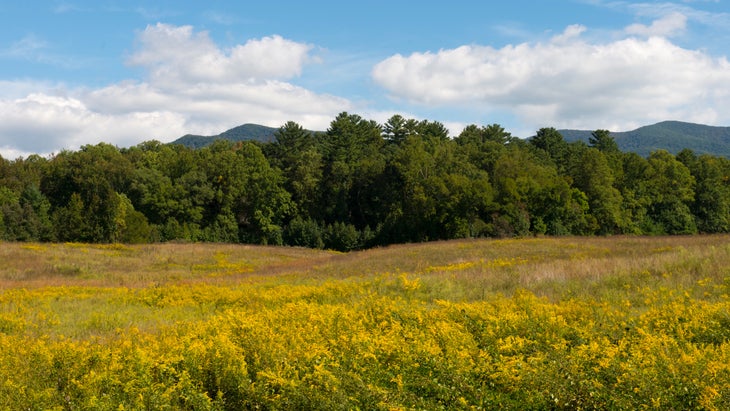
“It’s a scramble to find camping alternatives, because there are only a handful of campgrounds open inside the park,” says Vesna Plakanis, owner of , a guide service that runs trips inside the park. She says it’s not just the campgrounds that are closed, but access to many of the trails that begin at those campgrounds are also shut down for the summer. “Because those areas are closed, it’s putting pressure on other areas that generally aren’t as crowded. I’m seeing a lot more destruction of wildflower paths and people parking where they shouldn’t.”
Cutting the camping options in half will make spending the night inside the park more difficult this summer. Fortunately, there are plenty of privately owned campgrounds outside of the park that you can turn to if your trip has been impacted by the closures. And Nantahala National Forest borders the park in North Carolina, offering inexpensive and less crowded camping on public land.
Check out the Nantahala’s , which has 42 tent sites tucked into the woods on the edge of Lake Fontana near Bryson City, North Carolina. They’re all first-come, first-serve ($20 per night) and will give you relatively quick access to the quieter North Carolina side of the park.
Or you can treat yourself to a weekend at , which is located on the Tennessee side of the park, roughly 20 minutes to the popular hikes and scenic drives near Gatlinburg. The safari-inspired glamping tents sit on 182 acres complete with a restaurant and live entertainment on weekends (from $179).
Fortunately, it’s relatively easy to ditch the crowds in America’s most popular national park as the majority of the visitors tend to stick to the corridor surrounding Newfound Gap Road, in the heart of the park. And Plakanis says that spreading out is more important this summer than ever before.
“There are 900 miles of trails inside the park, so you don’t have to be relegated to the newfound gap corridor,” says Plakanis. “Just make sure you’re prepared with a good map, layers, plenty of water, and tell someone where you’re going.”
To avoid the crowds, head to the Lake Fontana Area, a 29-mile-long finger lake that forms part of the southern border at GSMNP. From there, you can hike a piece of the Lakeshore Trail, which follows the shore of the lake for 30 miles. Or hit one of my favorite hikes in the park, the seven-mile out and back to , which includes a beastly 2,500-foot climb but ends with an incredible view from that tower overlooking the park, the lake, and the Nantahala National Forest.
Arches National Park, Utah
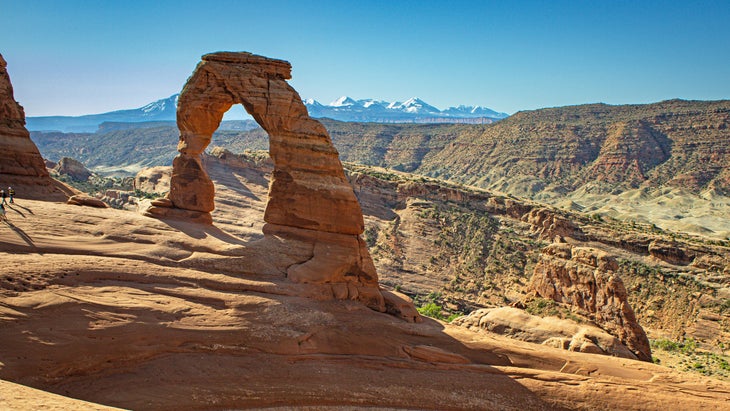
According to the park service’s annual statistics, visitation to Arches increased 74 percent between 2011 and 2021, when it hit a record 1.8 million visitors. It hasn’t slowed down much, attracting 1.4 million people in 2024. That popularity led the Park Service to implement a for all visitors, which they’re extending through 2025.
While the reservation system will be consistent and help manage crowds, staff cuts and delayed hirings have caused some changes to the visitor experience in Arches. First, the park is removing some trash cans and picnic tables from day use areas to reduce the need for maintenance, so plan on packing out whatever you pack into the park.
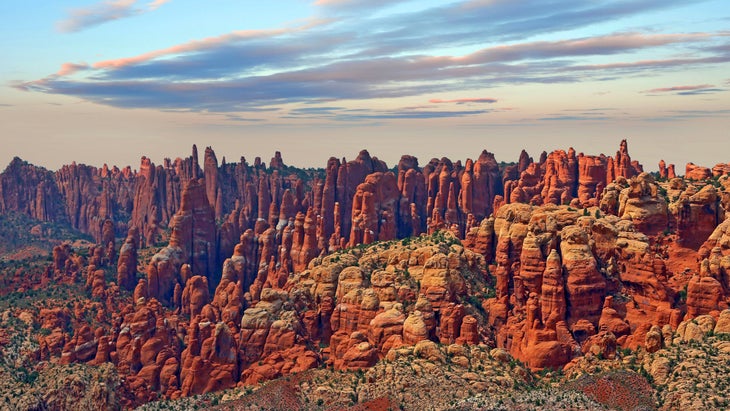
The biggest loss to visitors this summer is the closure of the area, a maze of slot canyons that can only be explored on a guided ranger hike or with a Self-Guided Exploration permit. As of now, because of staff limitations, the park is not offering guided hikes or individual permits, so the entire Fiery Furnace area is closed until further notice.
Arches has no extensive backcountry hikes (and no backpacking), so Fiery Furnace is traditionally a visitor’s best chance for ditching the crowds and exploring the landscape in solitude.
The next best option is the , which climbs steep, sandstone slabs and sand dunes while passing between tall fins on its way to Tower Arch. On a clear day, you can see the peaks of the La Sal Mountains through the opening of that sandstone bridge. It’s a tough 2.6-mile out and back hike, but the crowds stay away because of the required eight mile drive on a four-wheel drive only road to reach the remote Klondike Bluffs area of Arches.
Yosemite National Park, California
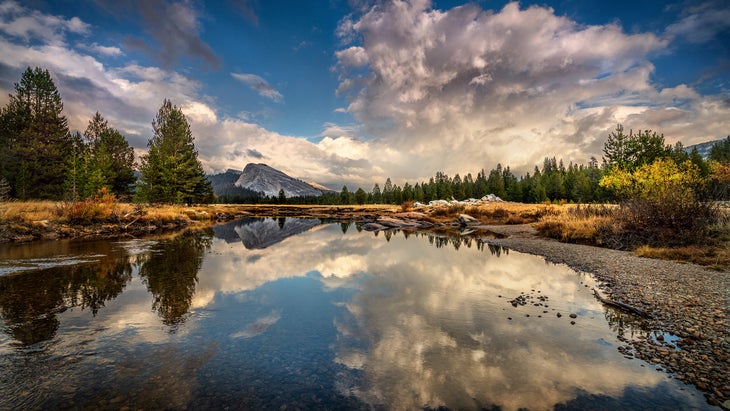
Yosemite is the sixth most popular park in the system, with more than 4 million visitors last year. The park is also notorious for its traffic jams, as the majority of those visitors are funneled into Yosemite Valley via a few two-lane roads. The South Entrance to the park on Highway 41 is particularly slow, and park management tells visitors to expect up to a two-hour delay on weekends during the summer.
The crowds have resulted in park management implementing a temporary timed entry reservation system during the last few years. Park officials were planning to put a permanent reservation system in place in 2025, but the plan was scrapped by the Trump Administration. Instead, another temporary reservation system for spring and summer was just that includes mandatory reservations from June 16 to August 15 between 6 A.M. and 3 P.M., on weekends between 6 A.M. and 3 P.M. from May 24 to June 15, and from August 16 to August 31. Every park entrance but the Hatch Tetchy station will require reservations. However, the has not been activated on Yosemite National Park’s website at press time.
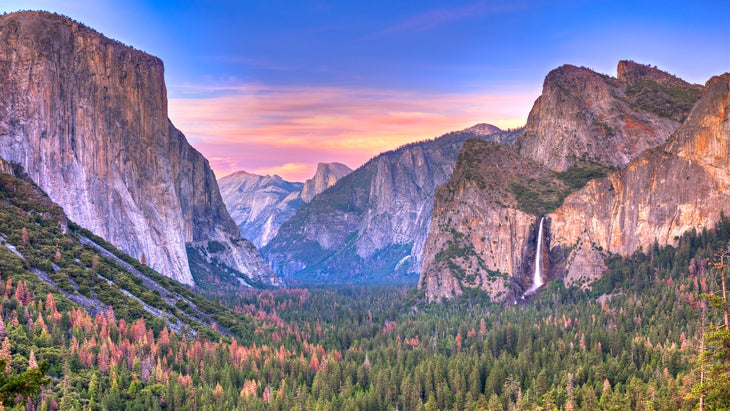
“Requiring reservations is controversial because it throttles the amount of people coming through, but I’m a fan of it personally as a guide,” says Gabriel Mann, owner of , which leads photography workshops, backpacking trips, and climbing adventures within the park. “Having a governor on crowds makes a huge difference and gives visitors so much more room to breathe and take in the sights.”
As to what visitors can expect once they’re inside the park? That’s still unclear as the seasonal hirings that park management depend on have been delayed by the Trump Administration. Yosemite also lost nine employees during the initial wave of firings. Oh, and Yosemite’s superintendent, Cicely Muldoon, retired in February. It’s already impacting the visitor experience, as Yosemite announced a in their reservation system for five of the park’s campgrounds (Upper Pines, Lower Pines, North Pines, Wawona, and Hodgdon Meadow).
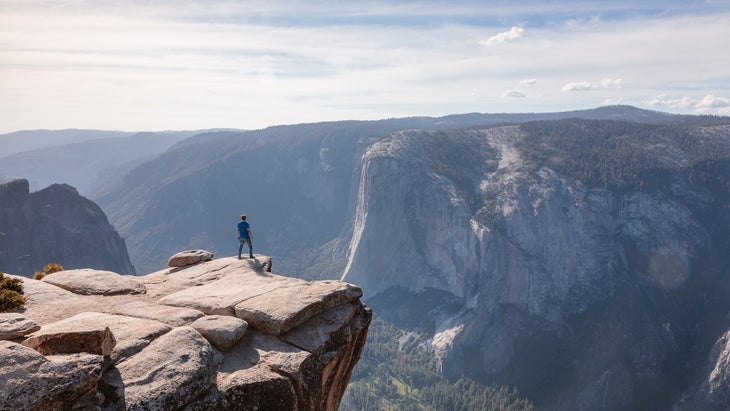
Mann hopes visitors will step up to do their part to keep Yosemite running smoothly by packing their own trash out with them and helping to pick up trash they see in parking lots and along trails.
Fortunately, it’s not hard to avoid the crowds in Yosemite if you come prepared and bring a sense of adventure. “The majority of visitors only see Yosemite Valley, and most of those visitors don’t go further than one mile on any trail,” says Mann.
Instead of cruising for a parking spot in the valley, Mann suggests heading to higher elevations to explore Tuolumne Meadows, a subalpine meadow surrounded by the Sierra’s craggy, ice-capped peaks. A number of hikes traverse the area. is a full-day, 7-mile lollipop loop that leads you to a glacier-carved lake at the bottom of Unicorn Peak. The first mile is a climb, which helps reduce the crowds.
Tuolumne Meadows even has its own scenic drive, the 46-mile , which is only open from late May through October, passing through forests and meadows with views of granite domes and lakes. If you hit the meadows in the spring, you can expect snow on the trails even if Tioga Road is open. Being prepared and self-sufficient while exploring this area is key, especially during the staff shortage.
Zion National Park, Utah
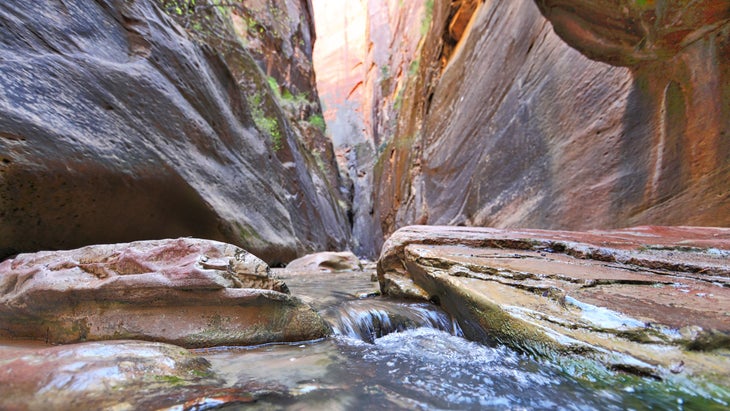
Zion National Park had 4.95 million visitors in 2024, earning the spot of the second-most visited national park in the country, edging out Grand Canyon National Park. Zion lost 11 employees in the first wave of layoffs, although it’s unclear how many of those have since been hired back. The park is currently planning to operate with a business as usual approach, with no disruption to facility hours, amenities, or ranger-led programs, but that’s largely because of the publicly-funded support system that supplements the management of the park.
“Zion is unique in the fact that it has strong partnerships with nonprofits and private organizations that provide a ton of volunteers and funding that has helped float the park through the last couple of government shutdowns,” says Xavier Velez, manager of , which provides guided adventures in and around the park.
But that doesn’t mean you won’t notice some hiccups this summer, particularly when it comes to entering the park. There is no timed entry reservation system at Zion, and this year, the popular pedestrian entrance is already seeing congestion because volunteers have taken over the staffing of that station and aren’t equipped to handle cash payments. Velez recommends buying your online before you get to the park to help streamline the process.
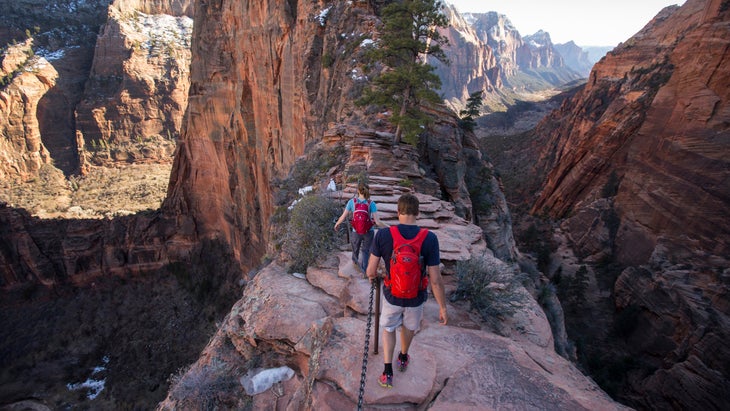
Crowds will continue to be an issue as Zion’s popularity grows, so visitors should expect lines at the entrance stations and other hikers on the trails. Xavier suggests looking just outside of the park if you want to ditch the crowds altogether. “The national park covers a small portion of the greater Zion area. If you know where to go, you’ll find landscapes that are just as stunning outside of the park with none of the crowds,” he says.
Velez points people to the Water Canyon area on land outside the southern entrance of the park, which is packed with waterfalls, slot canyons, sandstone features, and views of the mesas. Water Canyon has a technical slot canyon that you could explore with a guide, but there is also a seven-mile that most could do on their own that follows a stream through the heart of a larger gorge complete with hoodoos, waterfalls, and domes.
Here are three more national parks that are impacted by the Trump Administration’s staffing cuts.
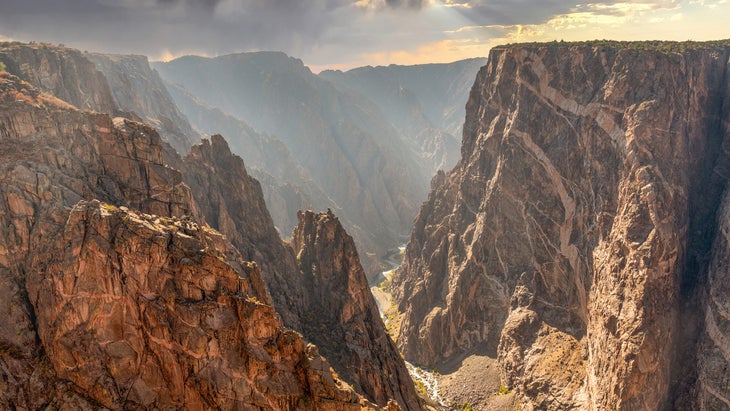
Pinnacles National Park, California
Pinnacles, which is known for its rock spires and cave system, has cancelled all this summer.
Carlsbad Caverns National Park, New Mexico
Carlsbad Caverns has suspended all until further notice. Visitors can still explore the cavern on their own.
Black Canyon of the Gunnison National Park, Colorado
Black Canyon of the Gunnison National Park is closing two of its three campgrounds (North Rim and East Portal Campgrounds) until . The South Rim Campground should open this spring, though no date has been determined yet.
Graham Averill is �����ԹϺ��� magazine’s national parks columnist. He’s been covering adventure travel and national parks for more than 20 years and remembers when President Obama called for a massive increase in the national park budget. He recently wrote about the prettiest drives in our national parks.
